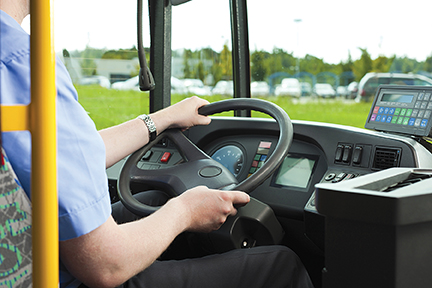
![]() BUSRide recently sat down with the principals of GreenRoad, Austin, TX, the providers of a driver and fleet performance management solution aimed at helping organizations improve productivity through real-time actionable data and insights. In this informative Q&A, we explore the benefits and intricacies associated with such a solution and its associated driver improvement programs.
BUSRide recently sat down with the principals of GreenRoad, Austin, TX, the providers of a driver and fleet performance management solution aimed at helping organizations improve productivity through real-time actionable data and insights. In this informative Q&A, we explore the benefits and intricacies associated with such a solution and its associated driver improvement programs.
What is driver behavior or driver performance modification? How is it different than GPS tracking drivers and speed?
The main problem with GPS telematics is that it’s an incredibly diverse technology which encompasses so many different fields. It tends to not diagnose the root cause of poor driving behaviors – the drivers and lack of real-time improvement coaching.
There are two major issues with driver behavior as it relates to bus and coach transportation. First, passenger transport drivers already have a disconnect between actual driving capability and perceived driving capability. Second, the very repetitive nature of driving a bus or coach means that, as drivers repeatedly trace the same routes, their level of concentration and focus begins to diminish.
GreenRoad has found a niche by first of all being able to clearly identify a driver’s risk profile – achieved through compound event detection coupled with its unique ability of calibrating its technology to each vehicle based on the client’s required standards.
It’s also important for drivers to access the information and use it for self-management. That removes the fear that this is a technology used to spy on the driver. When drivers are provided correction while in the vehicle, they begin to see that the technology is there to help them perform better behind the wheel.
For operators, driver performance modification technology allows them to maximize driver potential. The ability to engage with each driver, every day, face to face, is nigh impossible in a large operation. Having a technology where a huge proportion of drivers can self-manage or self-improve with the GreenRoad central interface makes a driver behavior project scalable and sustainable.
What does a successful driver behavior/safety program consist of for a mobile workforce or fleet?
No project can work unless management fully supports the technology. Once the program is established, it has a track record of very little management required.
Many operations have been very successful in feeding positive feedback to their drivers. This can include names on the wall or even letters of thanks from the CEO. One manager went down to his drivers’ breakroom in the morning and made tea, coffee and sandwiches for his drivers – just as a token of appreciation for their efforts. Those kinds of positive reinforcement go a long way. Other managers are providing tips and hints, and making sure that any struggling drivers know that they’re there to help, not criticize and complain.
If you have a psychology of openness, knowledge, training and very strong recognition of improvements, you’ll find that drivers modify their behavior far quicker than most would expect. Once it’s established, the system is essentially self-managing. Drivers begin to not only modify their behavior in the workplace, but also take it in to their personal lives as well.

What can an organization expect to see by way of results when implementing a driver behavior/safety program? What is the typical return on investment (ROI)?
Benefits yielded from driver behavior or safety programs typically are short-term benefits that grow into long-term benefits.
Safety is a very critical element when implementing GreenRoad. Still, it takes some time to find if a reduction in accidents is consistent, so most people initially make the move because of fuel savings. If you’re operating a fleet with inefficient drivers (not necessarily dangerous drivers, but certainly sub-optimized), a program like this can get them to perform optimally and managers will see anywhere between 4 to 10 percent in fuel savings, a significant reduction in passenger accidents and lower cost of vehicle maintenance. Three factors affect that: how bad the driver group is initially; how well the client engages with the project; and finally the type of operation. Urban or transit configurations allow for more maneuver changes. For these reasons, net effects of improvements in fuel and other safety and operational savings will be felt in no more than three months.
Accident rates are also significantly reduced. We typically see between a 25-50 percent reduction in accidents, but accidents are sometimes challenging to identify. Some operators claim any damage as an accident, while others have a cost threshold. The best method is to look at accident cost reduction, because programs like these are best at stopping significant accidents. This will undoubtedly lead to a reduction in insurance premiums.
For these reasons, the dramatic ROI that bus operators get from driver behavior systems are dramatically different from simple telematics systems, by orders of magnitude.
GreenRoad is a global leader in driver and fleet performance management solutions, helping organizations achieve greater productivity and improved safety and performance through real-time actionable data. GreenRoad’s advanced technology and analytics help organizations of all types improve driver safety, increase operational efficiencies, and maintain corporate and regulatory compliance while reducing overall risk. Visit www.greenroad.com.
